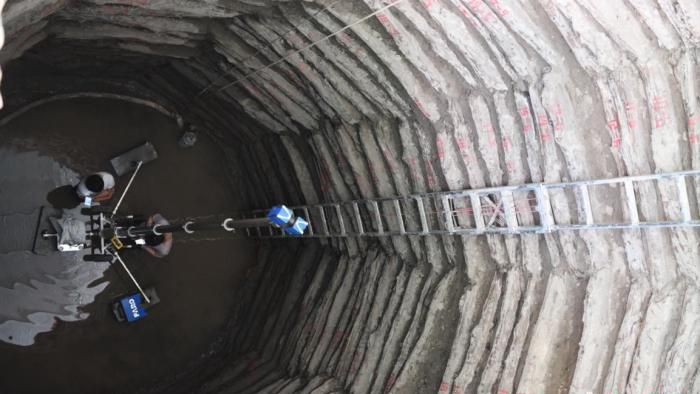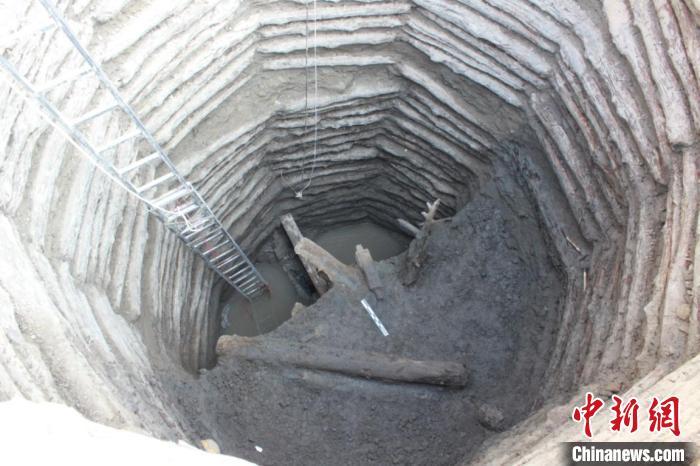
This undated photo shows archaeologists unearth an ancient nine-sided well of the late Warring States Period (475-221 BC) in Yangquan, north China's Shanxi Province. /chinanews.com
This undated photo shows archaeologists unearth an ancient nine-sided well of the late Warring States Period (475-221 BC) in Yangquan, north China's Shanxi Province. /chinanews.com
An ancient nine-sided well, bearing a wooden structure, with a history of over 2,000 years was discovered in north China's Shanxi Province, archaeologists announced Tuesday.
The well, located 570 meters from the ancient city ruins in modern-day Yangquan City, is believed to be the largest and best-preserved well of the late Warring States Period (475-221 BC) in the country. It was first seen during shantytown renovation in November 2019, according to the provincial institute of cultural relics and archaeology.

This undated photo shows an ancient nine-sided well of the late Warring States Period (475-221 BC) discovered in Yangquan, north China's Shanxi Province. /chinanews.com
This undated photo shows an ancient nine-sided well of the late Warring States Period (475-221 BC) discovered in Yangquan, north China's Shanxi Province. /chinanews.com
The well is nine meters deep and 4.5 meters wide at the mouth, archaeologists said. Timberwork dating analysis showed that the well was built and was in use from the late Warring States Period to the early Western Han Dynasty (202 BC-AD 25).
A large number of wooden slabs and fragments were also found in the well, leading to the speculation that railings and a pavilion were in place above the well at the time.
"The nine-sided structure is quite peculiar, and the masonry technology was exquisite. Its discovery is of great significance to the masonry technology of ancient wells and research of early wooden structures," said Zheng Haiwei, deputy director of Yangquan's heritage management center.
(With input from Xinhua)